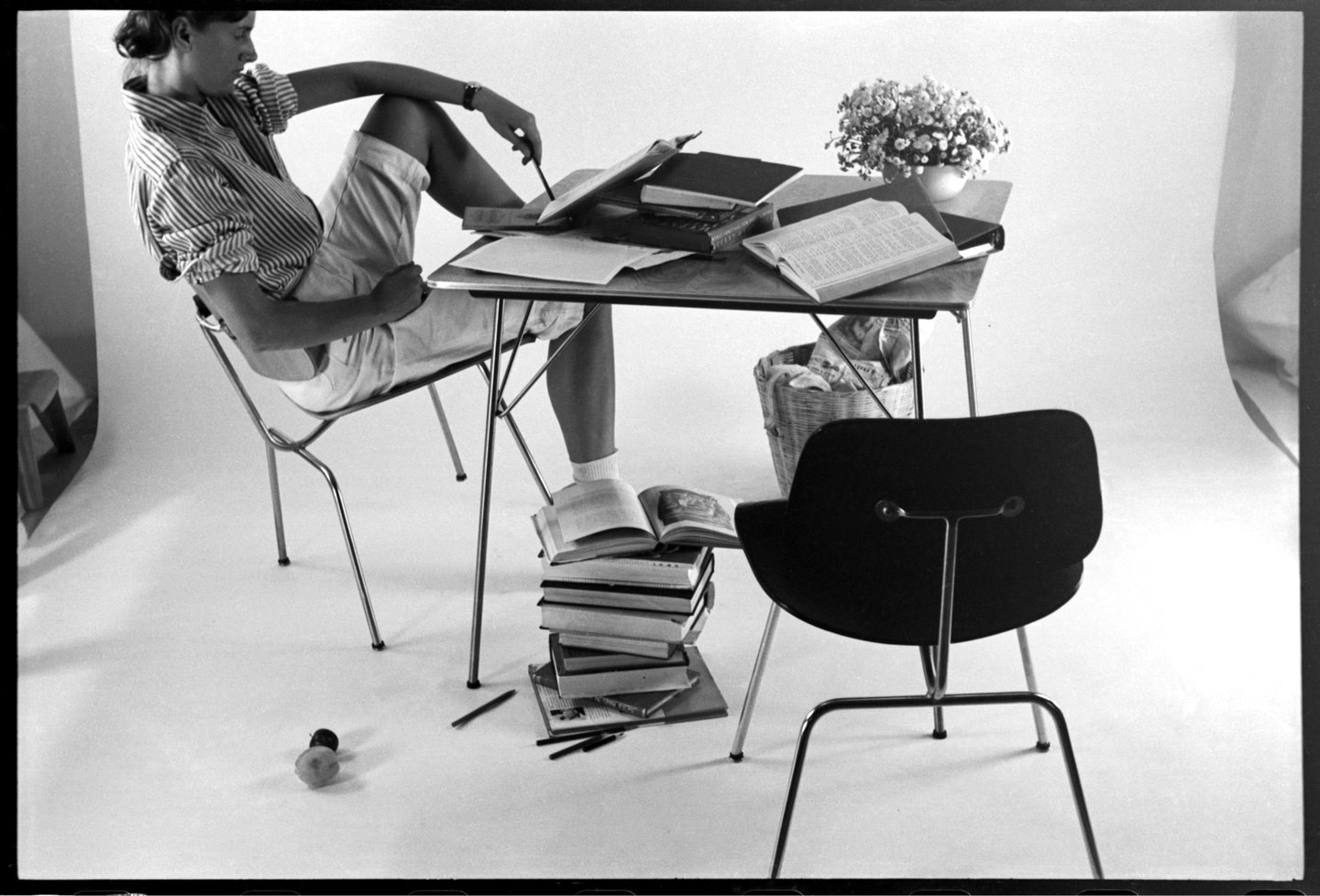Chairs often steal the spotlight in design conversations. That’s especially true when it comes to Charles and Ray Eames, the midcentury visionaries whose repertoire of molded plastic and plywood chairs set a new benchmark for mass-producing desirable products using novel fabrication techniques. While chairs indeed present an agonizing design challenge, tables are far simpler. “It’s just a base and a top,” says Llisa Demetrios, granddaughter to the Eames and the chief curator of the Eames Institute of Infinite Curiosity, which recently opened “Tables! Tables! Tables!”, a digital show about the couple’s experiments in table design. “They’re so well-designed, you forget they were designed at all.”
That’s because the Eameses approached tables pragmatically, seeking to create accessible, inexpensive products encapsulated by their mantra “the best for the most for the least.” The show presents an array of these concepts, from one-off prototypes riffing on a single idea to multiple iterations of an idea in development. One early table featured a molded plywood top with a tubular aluminum base designed to be durable and lightweight; an archival photograph shows the couple’s daughter, Lucia, sitting at a folding table surrounded by books and fruit, implying it could support both working and dining.
Flexibility may seem like a simple concept now, especially as remote work has necessitated multiple uses for spaces and furniture, but designers hadn’t considered it at the time. “Mobile, digital connectivity has enabled us to work or create anywhere, and freed us from the spatial demands and specificity of technological installations—much of which fell on tables,” writes Kim Colin, a furniture designer and co-founder of Industrial Facility. “Tables are now less often the centerpieces of rooms and have become more like supporting pieces in a varied landscape where anything goes and everything that can change, will.” With their multidimensional approach, the Eameses may have seen it coming.


